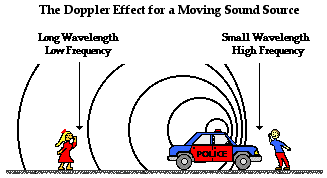- Joined
- Jan 29, 2010
- Messages
- 10
- Reaction score
- 0
I know this question has been asked, but I still don't understand the reasoning behind the answer.
"The primary rupture in the Landers quake moved from south to north as it progressed to its full 74-km length. How would the Doppler effect influence this?"
A) By decreasing the wavelength of seismic waves propagating eastward and westward
B) By increasing the wavelength of seismic waves propagating eastward and westward
C) By decreasing the wavelength of seismic waves moving northward and increasing the wavelength of waves moving southward
D) By increasing the wavelength of seismic waves moving northward and decreasing the wavelength of waves moving southward
The answer is C. The reason from AAMC is the Doppler effect will cause a bunching or squeezing of the waves with the rupture and an elongation of the waves opposing the rupture.
It seems to me that it depends on the reference point that one is looking at to arrive at the correct answer. I picked the answer D because standing from the south the waves would lengthen and frequency would decrease when the wave travels from south to north. However, it seems as though the reference point is from the north. What am I missing? Thanks
"The primary rupture in the Landers quake moved from south to north as it progressed to its full 74-km length. How would the Doppler effect influence this?"
A) By decreasing the wavelength of seismic waves propagating eastward and westward
B) By increasing the wavelength of seismic waves propagating eastward and westward
C) By decreasing the wavelength of seismic waves moving northward and increasing the wavelength of waves moving southward
D) By increasing the wavelength of seismic waves moving northward and decreasing the wavelength of waves moving southward
The answer is C. The reason from AAMC is the Doppler effect will cause a bunching or squeezing of the waves with the rupture and an elongation of the waves opposing the rupture.
It seems to me that it depends on the reference point that one is looking at to arrive at the correct answer. I picked the answer D because standing from the south the waves would lengthen and frequency would decrease when the wave travels from south to north. However, it seems as though the reference point is from the north. What am I missing? Thanks

